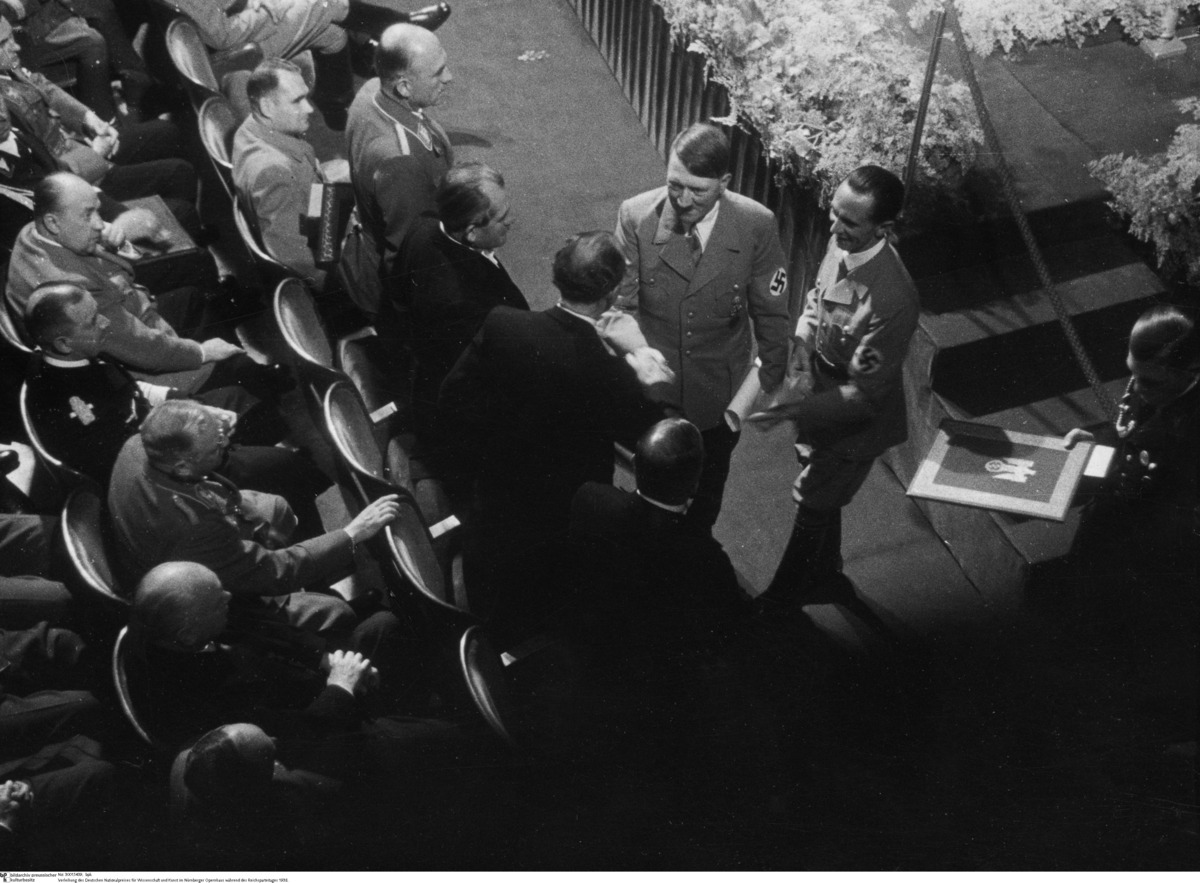Source

Source: Presentation of the German National Prize for Science and Art
at the Nuremberg Opera House during the Reich Party Congress in 1938.
Adolf Hitler, assisted by Joseph Goebbels, presents the honorary
certificates to Fritz Todt, Ferdinand Porsche, Willy Messerschmitt and
Ernst Heinkel (standing from left to right). Rudolf Hess seated on the
far left. Unknown photographer.
bpk-Bildagentur, image number
30015439. For rights inquiries, please contact Art Resource at
requests@artres.com (North America) or bpk-Bildagentur at
kontakt@bpk-bildagentur.de (for all other countries).